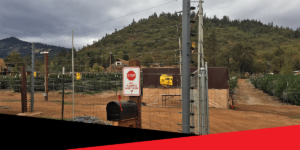Failing to Plan Your Security Budget is Planning to Fail.
It’s midway through the year, so now is the perfect time to start budget planning for next year. One crucial area to factor into your budget is increased security. Without it, your people, property, profits, productivity, and reputation are at risk.
The first step in securing any budget is building a strong business case to present to your decision-makers.
To build a strong business case, here’s what you should include in your proposal:
- The problems
- The benefits
- The risks
- The costs
- The solution
- The impacts
For security specific budget approval, use the 5 tips below.
1. Use CargoNet, or similar tools, to supply crime statistics for your surrounding area.
The first thing you need to show are the risks you’re taking without proper security. It’s not easy to get budget approval when you don’t highlight the problems you’re solving.
But don’t stop there! Gather intelligence from neighboring businesses as well. If you feel comfortable, talk to other business owners nearby to see if they’ve experienced any security issues. If they have, what was the impact on their business? What strategies did they use to effectively solve the problem?
However, don’t be alarmed if some aren’t willing to discuss their security failings. In fact, only 33% of all property crimes are reported in the US. That means 2/3 of these crimes are never reported at all.
2. Seek buy-ins from other departments to gather a complete picture of your business’s security needs/concerns.
Once you look outward, it’s best to look inward. Set meetings with each department to address their individual security goals. For example, the marketing department may be more concerned with reputation, while the field team may be more concerned about downtime due to stolen equipment.
A single incident can affect multiple areas of your business, potentially causing productivity loss, a tarnished reputation, lost profits, and the list goes on. To bolster your case for increased security, you need feedback and input from several departments.
3. Focus the conversation on risk management vs. budget spending
After you’ve got some decent data and a strong collective backing, you should begin to craft your pitch from a risk management perspective. Aligning the conversation with your company’s risk management goals is a great way to steer the discussion in the right discussion.
It’s much easier to convince your executives to increase security spending when you have a thorough outline of what you plan to achieve and the benefits that go along with it. So, make sure to home in on the risks you can mitigate, rather than the cost of the solution.
4. Give your team examples of the ROI associated with investing in stronger security.
For example, tighter security results in lower insurance premiums. If you’re in a highly populated area, your chances of property crime increase. The more risk, the higher your rate. But with the right perimeter security plan in place, you reduce your risks which leads to lower insurance rates. Lucky for you, insurance rates aren’t the only area you’ll see a return.
AMAROK recently did a business case analysis of more than 2,500 customers. The results were shocking…in a good way!
Based on our findings, AMAROK customers saved roughly $75,555 on average through reduced security guard costs, less downtime, and the cost savings associated with property theft. On average, that’s 5x greater than the subscription cost! Which leads us to my last tip…
5. Propose a security plan specific to your risks, site, and operation.
A lot of people are visual learners, so it’s best to present your security concerns and solutions as clearly and specifically as possible. During your budget meeting, provide imagery of your commercial business that highlights your security concerns, along with visuals and features of your proposed security solution. That way, you can walk through your security budget proposal with ease.
AMAROK offers free threat assessments, essentially doing most of this work for you. One of our security experts would be happy to visit your site to assess your property’s perimeter and vulnerabilities. Then, we’ll create a visual and informational aid, specific to your business’s needs.




